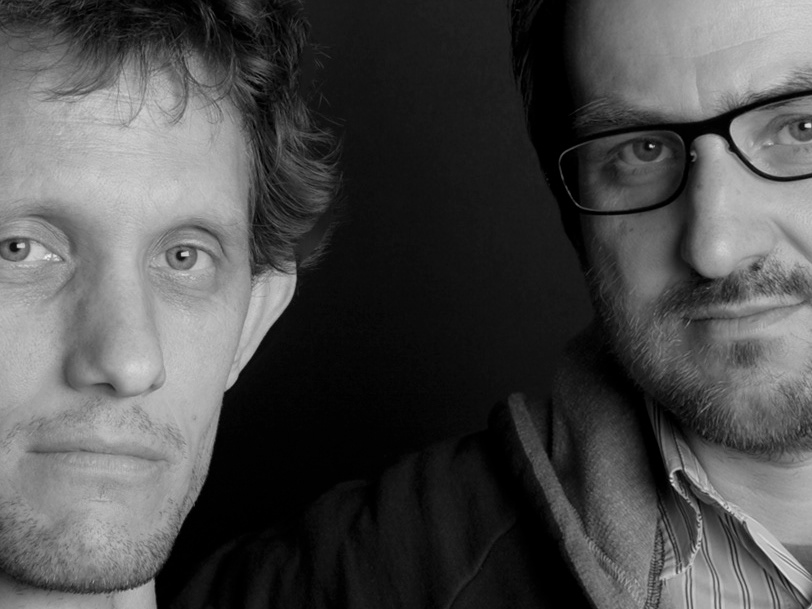fog 015 – 160 NC
scroll down for english
Film ist empfindlich – für Licht empfindlich. Aber nicht alle Filme sind gleich empfindlich. Es gibt Filme, die sehen mehr oder weniger Licht. Orthochromatische Filme sehen kein rotes Licht, Infrarotfilme sehen mehr rotes Licht und Farbfilme sehen rot, grün und blau.
Aber Filme sehen auch über das Sichtbare hinaus und so können verschiedene Strahlungen auf dem Film ein Bild in Form eines Grauschleiers (fog) hinterlassen.
Speziell die diversen Scanner auf Flughäfen bereiten daher den AnalogfotografInnen immer wieder Kopfzerbrechen. „Wohin soll ich den Film geben? In den Koffer damit oder doch ins Handgepäck?“.
Versuchen Sie einmal, den Sicherheitsdienst davon zu überzeugen, dass man die Filme nicht auf das Förderband legen will. „Ja, aber dann bitte alle Filmdosen öffnen, damit man sehen kann, was drinnen ist.“
Uns ist es noch nie passiert, dass ein Film durch einen Flughafenscanner verschleiert wurde. Weder in Eriwan, in New York, in Kapstadt noch in Zürich. Aber es gibt sie angeblich, diese „bösen Flughäfen“, die Filme kaputt machen.
Daher schicken wir zwei Filme - einen Kodak 160 NC und einen Ilford FP4 - unbelichtet mit dem Flugzeug auf Reisen. Nicht nur um einen agressiven Scanner zu finden, sondern auch um dem rätselhaften Material Film zu huldigen. Welche Strahlen wie den Film belichtet haben, ist nicht immer vorhersehbar und wird erst durch die Entwicklung sichtbar. In der Zeitspanne zwischen Aufnahme und Entwicklung ist das Bild zwar schon gespeichert aber nicht sichtbar. Es ist ein Phantom, in der Sprache der Fotografie latentes Bild genannt.
Niemand weiß genau, wie dieses Phantom aussieht und erst Entwicklung und Fixierung bringen Gewissheit.
Dieser Zustand des latenten Bildes gehört zu den nervenaufreibendsten Momenten in der Fotografie.
Hat man ein Bild für die Ewigkeit gemacht oder doch nur ein Phantom produziert?
Mit fog versuchen wir, dieses Phantom einzufangen.
Aber Filme sehen auch über das Sichtbare hinaus und so können verschiedene Strahlungen auf dem Film ein Bild in Form eines Grauschleiers (fog) hinterlassen.
Speziell die diversen Scanner auf Flughäfen bereiten daher den AnalogfotografInnen immer wieder Kopfzerbrechen. „Wohin soll ich den Film geben? In den Koffer damit oder doch ins Handgepäck?“.
Versuchen Sie einmal, den Sicherheitsdienst davon zu überzeugen, dass man die Filme nicht auf das Förderband legen will. „Ja, aber dann bitte alle Filmdosen öffnen, damit man sehen kann, was drinnen ist.“
Uns ist es noch nie passiert, dass ein Film durch einen Flughafenscanner verschleiert wurde. Weder in Eriwan, in New York, in Kapstadt noch in Zürich. Aber es gibt sie angeblich, diese „bösen Flughäfen“, die Filme kaputt machen.
Daher schicken wir zwei Filme - einen Kodak 160 NC und einen Ilford FP4 - unbelichtet mit dem Flugzeug auf Reisen. Nicht nur um einen agressiven Scanner zu finden, sondern auch um dem rätselhaften Material Film zu huldigen. Welche Strahlen wie den Film belichtet haben, ist nicht immer vorhersehbar und wird erst durch die Entwicklung sichtbar. In der Zeitspanne zwischen Aufnahme und Entwicklung ist das Bild zwar schon gespeichert aber nicht sichtbar. Es ist ein Phantom, in der Sprache der Fotografie latentes Bild genannt.
Niemand weiß genau, wie dieses Phantom aussieht und erst Entwicklung und Fixierung bringen Gewissheit.
Dieser Zustand des latenten Bildes gehört zu den nervenaufreibendsten Momenten in der Fotografie.
Hat man ein Bild für die Ewigkeit gemacht oder doch nur ein Phantom produziert?
Mit fog versuchen wir, dieses Phantom einzufangen.
Es gibt sie angeblich,
die bösen Flughäfen, die
Filme kaputt machen.
die bösen Flughäfen, die
Filme kaputt machen.

fog 010 – 160 NC

fog 003 – 160 NC

fog 005 – FP4

fog 001 – 160 NC

fog 015 – FP4
Film is sensitive - sensitive to light. But not all films are equally sensitive. There are films that see more or less light. Orthochromatic films see no red light, infrared films see more red light and colour films see red, green and blue.
But films also see beyond what is visible and so various radiations can leave an image on the film in the form of a grey haze (fog).
Especially the various scanners at airports are therefore a constant headache for analogue photographers. "Where should I put the film? In the suitcase or in the hand luggage?
Try convincing the security staff that you don't want to put the films on the transport belt. "Yes, but then please open all the film cans so you can see what's inside."
It has never happened to us that a film was obscured by an airport scanner. Neither in Yerevan, in New York, in Cape Town nor in Zurich. But they supposedly exist, these "evil airports" that break films.
So we send two films - a Kodak 160 NC and an Ilford FP4 - unexposed by plane. Not only to find an aggressive scanner, but also to pay homage to film as an enigmatic material. Which rays have exposed the film and how is not always predictable and only becomes visible during development.
In the time span between exposure and development, the image is already stored but not visible. It is a phantom, called a latent image in the language of photography.
Nobody knows exactly what this phantom looks like and only development and fixing bring certainty.
This state of the latent image is one of the most nerve-wracking moments in photography.
Have you taken a picture for eternity or have you just produced a phantom?
With fog we try to capture this phantom.
But films also see beyond what is visible and so various radiations can leave an image on the film in the form of a grey haze (fog).
Especially the various scanners at airports are therefore a constant headache for analogue photographers. "Where should I put the film? In the suitcase or in the hand luggage?
Try convincing the security staff that you don't want to put the films on the transport belt. "Yes, but then please open all the film cans so you can see what's inside."
It has never happened to us that a film was obscured by an airport scanner. Neither in Yerevan, in New York, in Cape Town nor in Zurich. But they supposedly exist, these "evil airports" that break films.
So we send two films - a Kodak 160 NC and an Ilford FP4 - unexposed by plane. Not only to find an aggressive scanner, but also to pay homage to film as an enigmatic material. Which rays have exposed the film and how is not always predictable and only becomes visible during development.
In the time span between exposure and development, the image is already stored but not visible. It is a phantom, called a latent image in the language of photography.
Nobody knows exactly what this phantom looks like and only development and fixing bring certainty.
This state of the latent image is one of the most nerve-wracking moments in photography.
Have you taken a picture for eternity or have you just produced a phantom?
With fog we try to capture this phantom.
They supposedly exist,
the evil airports that
that ruin films.
the evil airports that
that ruin films.










